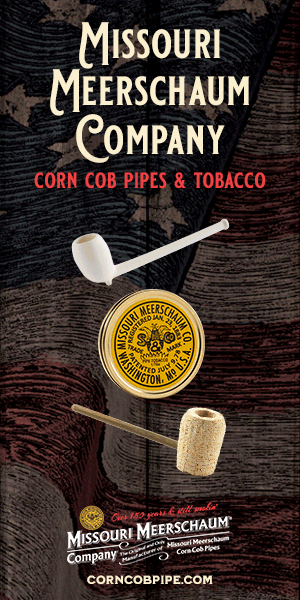Everyone likes pretty wood; some carvers like S. Bang are said to be able to predict grain inside the block and by this reveal grain that can be showcased, making pipes more comely than some other carver, and get a better price. I wonder if Castello has employees that read unseen grain, as well, as they sell so many beautiful smooths, but perhaps they buy ultra high-quality blocks. I've also read that 95/100 blocks have only average grain. One can just see a carver at the shaping station, seeking good grain, cutting into block after block and pitching one after another of them over his shoulder. I don't think business works that way. Then too there were firms like Barling that until ~1960 used only superior Algerian briar, of noted porosity.
Wood, then, is the main ingredient, and porosity is touted high on the list of its desired qualities, which brings me to my question. Porous wood will be lighter, a much prized attribute, as clenching requires manageable effort up to about 50g, and above 60g it becomes effort requiring labor. But I imagine that wood with this quality is also prized because it smokes dry. Most of us rest our pipes, and before packing take a look at the bottom of the chamber for the telltale black color that says the pipe needs more rest still.
I do this but question it. Whatever amount of water is in the wood at the bottom of chamber would appear only to be of concern to prevent gurgle, but usually when I have gurgle the problem is in the stem, close to the bowl. A pipe cleaner comes out moist and it is gone. In fact, I'm not sure if it ever comes from the bowl bottom, but I think it might if the pipe wasn't sufficiently dry. My thinking is that a briar that has moisture in it could not absorb the moisture released from the burn, and if this was the case, moisture would accumulate in the bottom of the bowl, causing gurgle. That's just my theory, but porous wood that could absorb more water than dense briar could then be more highly prized.
So I really don't know why porosity is valued; I just have my thinking. I wonder if this is simply myth, but Algerian briar before it ran out has such a reputation. Mention it and many guys will say ooh. Pipe sellers use it as a commendation, for instance recommending old Edwards pipes. I have several and I don't find any difference. But then again I am unable to taste the difference between briar, meerschaum and Missouri Meerschaum.
Wood, then, is the main ingredient, and porosity is touted high on the list of its desired qualities, which brings me to my question. Porous wood will be lighter, a much prized attribute, as clenching requires manageable effort up to about 50g, and above 60g it becomes effort requiring labor. But I imagine that wood with this quality is also prized because it smokes dry. Most of us rest our pipes, and before packing take a look at the bottom of the chamber for the telltale black color that says the pipe needs more rest still.
I do this but question it. Whatever amount of water is in the wood at the bottom of chamber would appear only to be of concern to prevent gurgle, but usually when I have gurgle the problem is in the stem, close to the bowl. A pipe cleaner comes out moist and it is gone. In fact, I'm not sure if it ever comes from the bowl bottom, but I think it might if the pipe wasn't sufficiently dry. My thinking is that a briar that has moisture in it could not absorb the moisture released from the burn, and if this was the case, moisture would accumulate in the bottom of the bowl, causing gurgle. That's just my theory, but porous wood that could absorb more water than dense briar could then be more highly prized.
So I really don't know why porosity is valued; I just have my thinking. I wonder if this is simply myth, but Algerian briar before it ran out has such a reputation. Mention it and many guys will say ooh. Pipe sellers use it as a commendation, for instance recommending old Edwards pipes. I have several and I don't find any difference. But then again I am unable to taste the difference between briar, meerschaum and Missouri Meerschaum.







